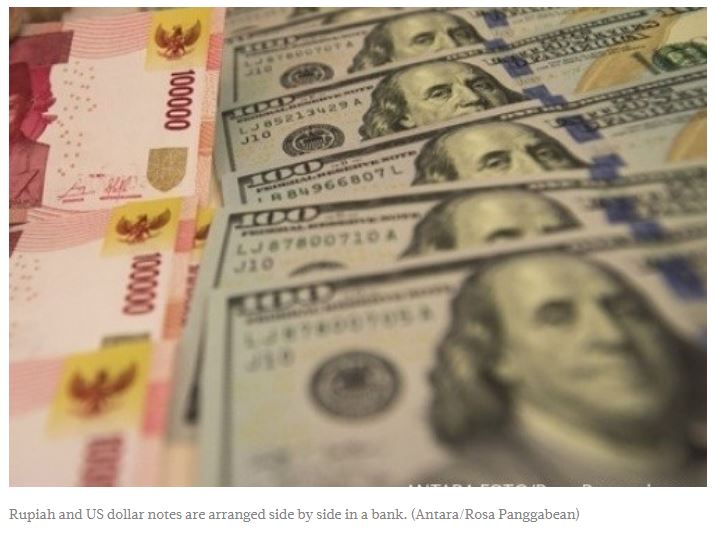Repayments slow growth of Indonesia’s foreign debt in November
Bank Indonesia (BI) recorded a slower foreign debt growth last November as the government and private sector repaid the principal due during the month while the latter also borrowed less.
BI revealed on Wednesday that the country’s total foreign debt reached US$401.4 billion in November 2019, higher 8.3 percent year-on-year (yoy). The growth, however, was slower than October’s figure of 12 percent yoy.
The central bank said it deemed the foreign debt level as healthy as its ratio to the country’s gross domestic product (GDP) in November was 35.9 percent, relatively stable compared to the month before, while about 88.5 percent of the foreign debt is long-term.
“BI and the government continues to increase our coordination in monitoring the foreign debt’s growth, while also applying the principle of prudence in managing it,” BI said in a statement.
In November, the combined debt of the government and BI amounted to $198.6 billion, a growth of 10.1 percent yoy, slowing from last October’s growth rate of 13.6 percent yoy. BI attributed the slowing growth to the government’s efforts to repay its bilateral and multilateral loans that were due that month.
About 19 percent of the government’s foreign debt went to pay for health and social services, 16.1 percent for the education services sector and 15.4 percent for government administration, defense and mandatory social security. The money’s use was in line with the government’s priorities to improve public welfare, BI said.
“The government also used the debt for the productive sector to boost our economic growth,” BI said in the statement, adding that about 16.5 percent of the debt went to the construction sector and 13.4 percent to the banking and finance sector.
The rest of last November’s debt was held by the private sector, including state-owned enterprises (SOES), the loans of which grew by 6.9 percent yoy to $200.1 billion. The growth was still much slower than October’s rate of 10.7 percent yoy.
“The rate of domestic bond repayments during the month was much higher than the issuance as many bonds were reaching their maturing dates,” the report reads.
The private sector’s foreign debt was dominated by debts in the financial services and insurance sector, electricity, gas, steam and wind procurement sector, manufacturing sector and mining sector.
However, Institute for Development of Economics and Finance (Indef) economist Bhima Yudhistira told The Jakarta Post that the slowing growth was caused by the private sector’s lack of appetite for expansion.
“The private sector, especially the manufacturing industries, is holding back its expansion as uncertainties still loom over this year’s global outlook, increasing risks and slowing domestic demand,” he said, adding that refinancing needed for due debts was also slowing, which caused foreign debt growth to slow as well.
Source: https://www.thejakartapost.com/news/2020/01/15/repayments-slow-growth-of-indonesiasforeign-debt-in-november.html


 Thailand
Thailand




